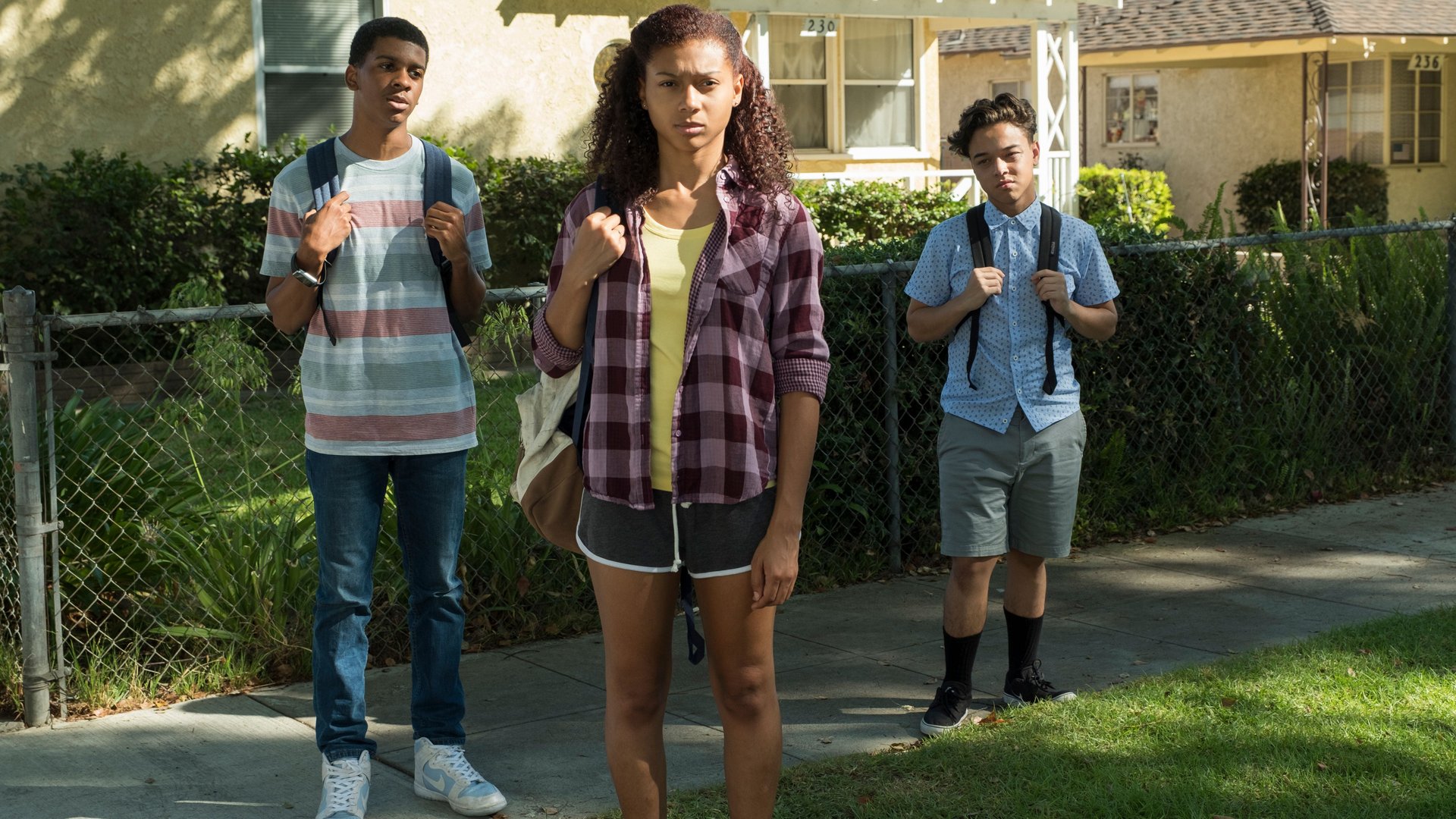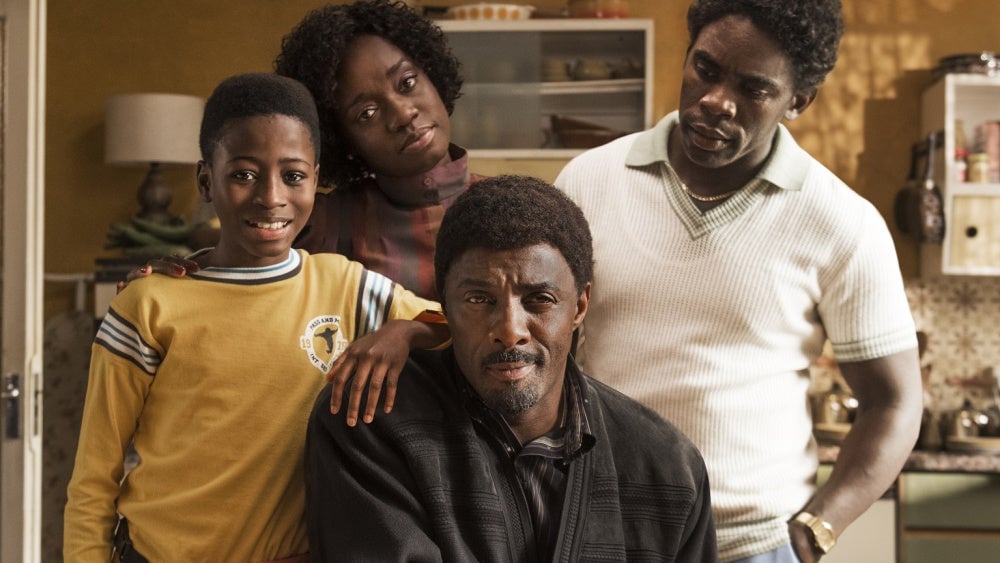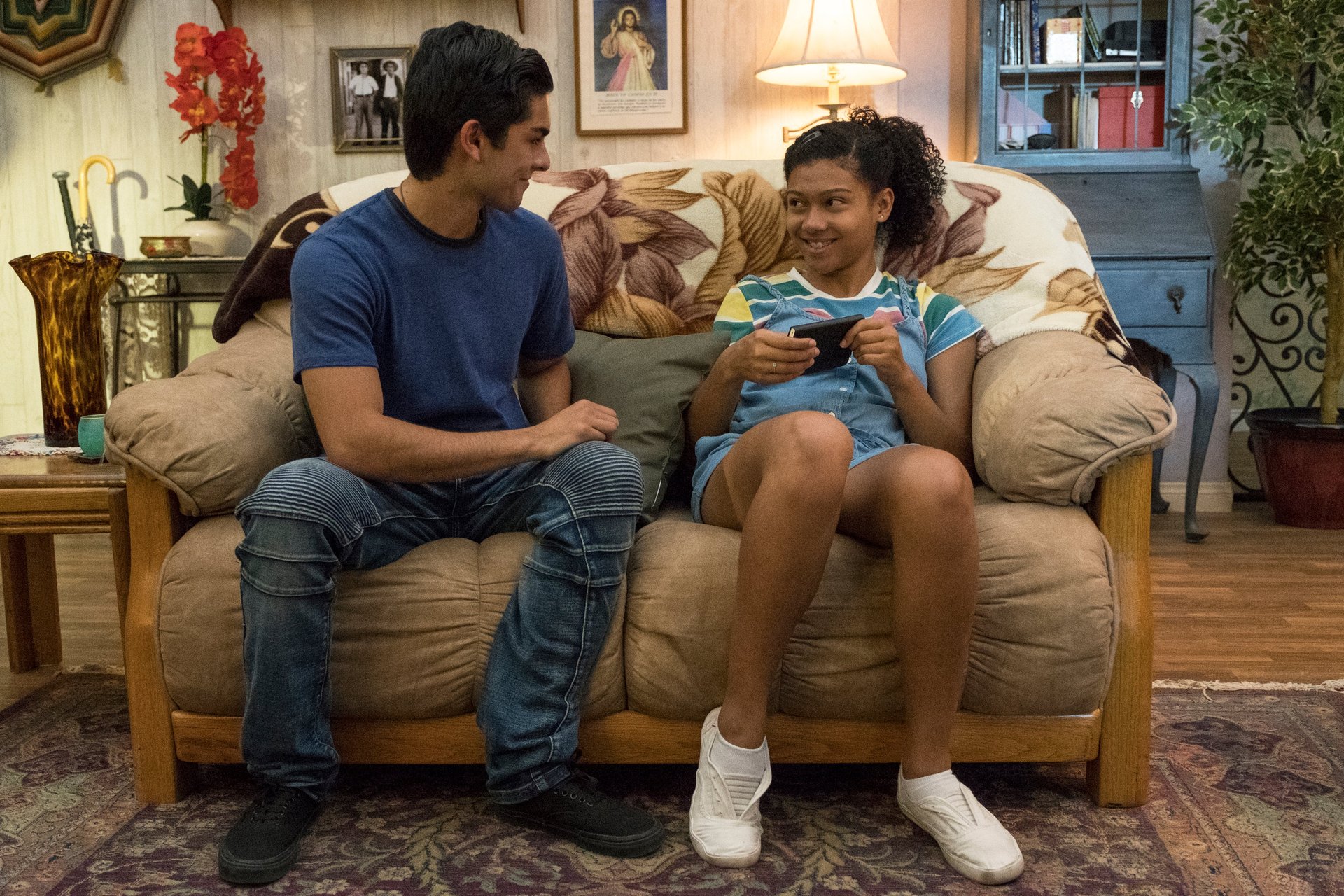TV demonizes the working class. Two new shows finally celebrate them
In 1936, George Orwell gave up his part-time job as a bookshop assistant in London and headed north on a fact-finding mission. His subject? The English working class.


In 1936, George Orwell gave up his part-time job as a bookshop assistant in London and headed north on a fact-finding mission. His subject? The English working class.
Orwell documented the appalling living conditions of working class communities in Lancashire and Yorkshire and the “petty inconvenience and indignity” of their lives. While he was rubbing shoulders with the poor, Orwell came to an uncomfortable realization about why his own class had allowed such abject poverty to exist. “It is summed up in four frightful words,” he writes in his book The Road to Wigan Pier: “The lower classes smell.”
The idea that there is a discernible, fundamental physical difference between classes is essential to maintaining class barriers, as Orwell goes on to explain: “Middle-class people believe that the working class are dirty … and, what is worse, that they are somehow inherently dirty.” In a seminal 2005 paper, British sociologist Stephanie Lawler expands on Orwell’s point. At the heart of middle-class identity, Lawler argues, is a feeling of disgust towards working class existence. The middle class sees itself as everything the working class is not: educated, well-mannered, and clean.
Nowhere is that feeling of disgust more readily apparent than in television’s portrayal of working-class homes. For decades, TV shows in both the US and the UK have painted an “unremitting picture of bleakness and emptiness, in which life often has literally no meaning,” as Lawler writes.
But two new series, Sky’s In The Long Run and Netflix’s On My Block, offer a radical departure from this approach, demonstrating the warmth, resilience, and quirks that have long defined working-class communities.
In The Long Run is a family sitcom set in the 1980s in an East London council estate, a form of subsidized public housing in the UK. Idris Elba stars and writes the show, which is loosely based on his childhood. He plays the newly immigrated Walter Easmon, a character based on his own father, while Sammy Kamara is 12-year-old Kobna, Easmon’s son and a stand-in for Elba’s youthful self.

Across the Atlantic, a group of young black and Latinx freshman in central Los Angeles are the main characters in of On My Block. The teens juggle all the problems that come with being a freshman at high school, while dealing with the violence that permeates their lives.
Both shows are realistic about the disadvantages their characters face, from the threat of violence to to overcrowded housing. But by showcasing characters who lead joyful—albeit chaotic—lives with an abundance of love, good music, great food, and fashion, they serve as a stunning rebuke of the myth that the working class has no culture or value.
A brief history of biased TV
Most media representations of working-class communities tend to focus on what these homes lack. This isn’t primarily about a lack of material resources, but “a lack of ‘taste,’ knowledge, and the ‘right ways of being and doing,’” Lawler says. An ugly stereotype of the working class blossomed: people in this group watched TV all day, ate fast food, drank, gambled, and fought, while the middle class might study, visit museums, drink nice wine, eat at fancier restaurants, and raise well-read and well-spoken children.
In this ideation, the working class is not the “salt of the earth” but the “scum of the earth,” as British journalist and author Tim Lott notes in The Guardian. This stereotype has a devastating impact on working-class children, who receive constant messages that “lack of money, lack of education and lack of taste (this part is very important, as taste and vulgarity are a part of pride) makes them lesser human beings, worthy of scant opportunity.”
At best, these communities are defined by deprivation; at worst, they’re seen as dens of criminality. It seems, almost every year, a British politician vows to remove the social housing that many of Britain’s poor live in. The same is true of the US, where working-class communities elicit a similar level of disgust. During the 2016 US presidential campaign, for example, Donald Trump called inner cities a “disaster,” saying of urban African-American and Latinx residents, “You get shot walking to the store. They have no education. They have no jobs.”
And so it’s no surprise that, over the last two decades, UK TV shows have displayed a grotesque voyeurism toward Britain’s poor, as Andrew Collins writes in The Guardian. The 2013 BBC documentary Nick & Margaret: We All Pay Your Benefits, for example, was a reality show in which middle-class “taxpayers” were invited into the homes of people on welfare to judge their lifestyles and shopping habits. There was a life-swap show titled Why Don’t You Speak English?; another 2013 documentary that made welfare claimants live for a week on the 1949 equivalent; and the infamous Benefit Street, the program that followed residents in a neighborhood where many claimed welfare. Other shows about welfare recipients included Skint, On Benefits and Proud, Benefits: Too Fat, and even The Great Big Benefits Wedding.
These shows didn’t just deliver a safari to gawk at the unemployment and destitute; they created an entire genre intended to humiliate the working class. At the core of such shows are an “us-versus-them” mentality that invites members of the middle-class majority to criticize the undeserving poor. Lawler argues that this ritual humiliation of the working class is a form of “massification,” in which people in this class become a uniform, distrusted group in society. Important differences and nuances are lost. These reality TV shows portray working-class communities “as entirely devoid of value and worth,” Lawler notes in her paper.
The US has plenty of examples of this genre too, perhaps most notably TLC’s Here Comes Honey Boo Boo. The show follows the Thompson family, members of the rural white working class who are overweight and obsessed with child beauty pageants. One critic at the conservative Washington Times wrote that the family is “stupid, lazy and hopeless.” Also in this group are A&E’s Duck Dynasty and MTV’s Buckwild, as well as My Big Fat American Gypsy Wedding and CBS’s short-lived 2015 show The Briefcase, which depicted disadvantaged people faced with the choice between keeping a much-needed sum of $100,000 or dividing the money with another cash-strapped family.
There are a few notable examples of scripted TV that portrayed the working class with nuance and rigor; HBO’s The Wire received rightful praise. But these shows are few and far in between. Showtime’s Shameless, which follows a blue-collar Chicago family made up of six siblings and an alcoholic, unemployed father, has received mixed reviews, with some applauding the show’s comedic perspective on poverty, and others suggesting that its tone smacks of condescension. CBS’s 2 Broke Girls—largely seen as the network television’s response to the financial crisis—was criticized for relying heavily “contrived” class conflict and racist caricatures.
Overall, when it comes to fictional television shows, the lack of characters experiencing real economic anxiety is conspicuous. New York Times critic Wesley Morris noted in 2016 that, over the last decade, as “real people became poorer and lost their jobs, the ones on TV got richer, and their jobs seemed more beside the point.” Characters on TV didn’t work for pay to afford food, rent, and other living expenses; they worked instead for “comedy, for suspense, for sport,” according to Morris. For the most part, in recent years, scripted TV has portrayed an alternative classless society in which doctors, cops, and lawyers live in similar abodes with impressive interiors, while working-class neighborhoods have remained invisible.
The creation of working-class communities
To understand the importance of On My Block and In the Long Run, it’s useful to consider the histories of the neighborhoods in which they take place.
In the Long Run’s neighborhood mimics the social housing in Canning Town, a town in the fringes of East that Elba once called home. In the UK, social housing is now understood to be inhabited by the country’s poorest. But this wasn’t always the case.
After World War II, Britain implemented a radical social experiment: social housing that would be home to mixed communities. Aneurin Bevan, the former minister of health who established Britain’s free National Health Service, spearheaded the social housing revolution.
“We should try to introduce what was always the lovely feature of English and Welsh villages, where the doctor, the grocer, the butcher and the farm laborer all lived in the same street,” Bevan said. The logic was simple: If people from different backgrounds and income levels live alongside each other, they are aware of—and care more about—one another’s well-being.
Around 42% of the UK lived in social housing by 1979. A “staggering” 20% of the richest tenth of the population lived in social housing then, as left-wing columnist and political activist Owen Jones explains in his book Chavs: The Demonization of the Working Class.
The ideal of the mixed community existed in social housing for a time. But within 30 years, the number of Brits living in council estates dwindled to just 8%. The dramatic change can largely be traced to a government program introduced in 1980 called “right to buy.” The program allowed social housing tenants to buy their properties at a discount. Tenants who could afford to buy their homes did so, but the government failed to build more social housing and replenish its housing stock.
The remaining, ever-diminishing stock of available homes was prioritized for those most in need. Bevan’s dream of mixed, integrated communities was quietly undone. Today, over two-thirds of those living in social housing belong to the poorest two-fifths of the UK population. Nearly half of social housing is located in the poorest fifth of the neighborhoods, Jones notes in Chavs.
In the US, ghettos weren’t created as a byproduct of neoliberal housing policies, but by deep-seated and intentional policies of segregation. A series of discriminatory practices such as redlining (denying key services such as mortgages to residents who come from certain areas), as well as low incomes, meant that homeownership was out of reach for many black Americans. Meanwhile, a dearth of employment and educational opportunities only reinforced segregated communities.
South Los Angeles, where On My Block takes place, largely came to prominence in the public eye while it was burning (paywall). Racially charged riots in 1992 brought the city to a halt and quickly came to serve as a go-to image of the struggles of inner-city life.

Decades later, Latinx immigrants moved into the areas once restricted to black Americans. While racial tensions spiked and eventually eased between the different groups, many of the promises that were made after the riots to rebuild and invest in the community were never met. The same economic ills—unemployment, a preponderance of low-wage work, and high drop-out rates from high school—persisted.
Gang violence, poor housing, drug and alcohol abuse, as well abject poverty, have indeed been a reality for many members of the working class in Los Angeles and London. But pop culture tends to take a one-note view of these circumstances, depicting communities in which no culture, happiness, or morality exists.
A place to call home
Working-class communities, we’re told, are places to escape from—not the kind of neighborhoods people would fondly call home. But while issues of poor housing, and poverty are real, these places aren’t just defined just by what they lack. For many, there’s also an abundance of love, and joy.
In the Long Run has been praised for creating “high art out of estate living.” Mid- and high-rise concrete blocks of flats are often immersed under yellow and orange tints. A young boy sings beautifully from his balcony on a cold winter night. The houses are draped in shockingly colored carpets, heavy fabrics, and floral wallpapers. The milkman carries out his deliveries early in the morning, juxtaposed against the men and women heading to work. Children play in the skate park, and the adults dance in the local pub. It’s a far cry from what former UK prime minister David Cameron once described as “concrete slabs dropped from on high, brutal high-rise towers and dark alleyways that are a gift to criminals and drug dealers.”
On My Block, meanwhile, showcases the intimate moments in working-class homes: meals shared over the dining table, plots hatched out in teenage bedrooms, the fight to carve out a space for yourself in an already over-crowded house. This was an intentional decision by the show’s co-creator Eddie Gonzalez, who grew up in an area similar to the neighborhood in On My Block. “Growing up in Inwood wasn’t bleak,” Gonzalez tells I-D Vice. “It wasn’t this hopeless place a lot of people portray it to be.”
To that end, even as the show’s black and Latinx cast members attempt to navigate gangs in their neighborhood, they get to have fun sometimes, too. The kids organize a quinceañera, flirt and fall in love, and go on a Goonies-style adventure looking for a rumored horde of cash, knowing they are up against the odds. (As one character aptly notes, “only white kids find treasure.”) What these kids lack in material resources, they make up for with a deep commitment to each other, a never-ending supply of wit and curiosity, and the kind of banter that allows them to make a game out of distinguishing gunshots of a .38 from a .49, even as they scatter from a party gone south. The show is lighthearted and funny, but its working-class characters are never the butt of the joke.
Stories worth telling
Of course, there’s an elephant in the room when it comes to TV representations of blue-collar people: The recent reboot of ABC’s Roseanne, a show about a largely white working-class family from Middle America.
The reboot, which brought many of the old cast members back, is a hit (paywall). With delayed viewing, the ratings reached 25 million viewers for last month’s premiere. But the online conversations about the show rely on a tired, outdated trope about the working class, operating under the assumption that the people in this group are largely white and pro-Trump. (In fact, white people of every class voted overwhelmingly for Trump.)
The reboot gives the character Roseanne a black granddaughter, but the young girl has no lines in the first episode. While the granddaughter is probably meant to show how at ease the family is with race, her silence is unintentionally revealing (paywall)—black and Latinx people go largely unheard in conversations about class.

By contrast, in In the Long Run and On My Block, there’s no need to choose between a focus on race or class. The shows understand that the problems of racial discrimination in employment, education, and housing, as well as fears around immigration, are also fundamentally working-class issues.
In 2014, a UK government minister who spearheads the social mobility and child poverty commission called on working-class children to be more middle-class to get ahead in life, suggesting that they need to change the way they eat, dress and conduct personal relationships. But as Bev Skeggs, a professor of sociology at Goldsmith University in London, notes in her book Class, Self, Culture, “working-class culture is not point zero of culture; rather, it has a different value system, one not recognized by the dominant symbolic economy.”
Shows like On My Block and In the Long Run show what happens when TV shows engage with working-class value systems rather than judging them. The loving, honest portrayals of working-class homes affirm the right of working-class kids and adults to take pride in their identities, reminding viewers that their stories are valuable and worth being told. Meanwhile, the shows serve as a corrective to mainstream misconceptions about the working class—and work to close the narrative vacuum that is all to easy to fill with stories that sow class divisions and discontent. Simply put, the working class, done right, makes for great TV.